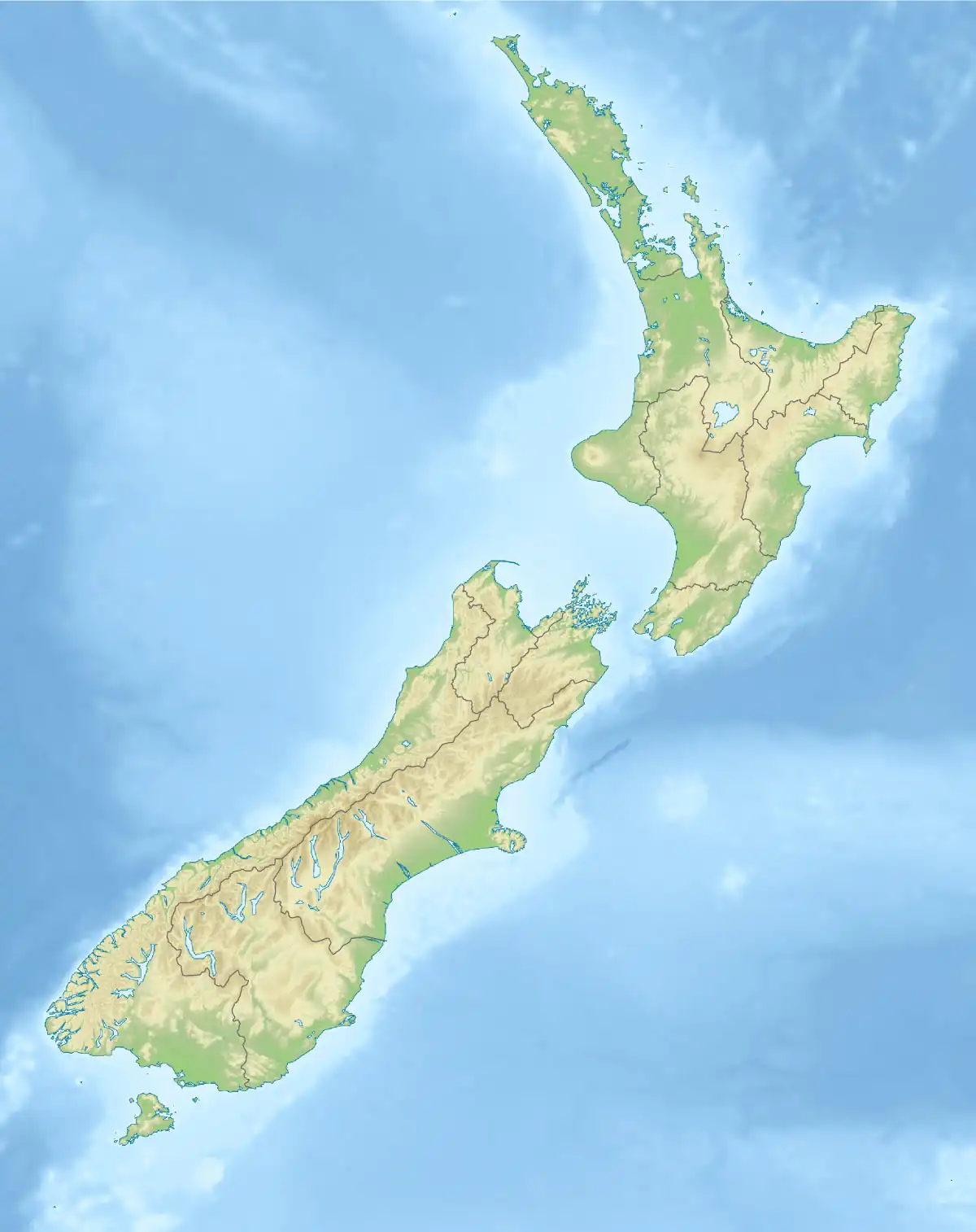Whakamaru Dam
Whakamaru Power Station is a hydroelectric power station on the Waikato River, in the North Island of New Zealand. It is the fourth hydroelectric power station on the Waikato River.
| Whakamaru Power Station | |
|---|---|
 | |
 Location of Whakamaru Power Station in New Zealand | |
| Country | New Zealand |
| Location | Lake Whakamaru |
| Coordinates | 38°25′11″S 175°48′30″E |
| Status | Operational |
| Opening date | 1949 |
| Owner(s) | Mercury Energy |
| Dam and spillways | |
| Impounds | Waikato River |
| Turbines | 4 |
| Installed capacity | 124 MW |
Lake Whakamaru is one of the larger hydro reservoirs on the Waikato river. The power station is owned and operated by Mercury Energy.[1] The adjacent Whakamaru switching station is operated by Transpower and is one of eight reference nodes on the New Zealand national grid.[2]
History
Development work started in 1949 with the construction on 10 kilometres (6.2 mi) of road from Mangakino which at the time was the operational centre of the Waikato hydroelectric scheme. Firstly a diversion channel 259 metres (850 ft) long, 31 metres (102 ft) deep and 7 metres (23 ft) wide was built taking 3 years to complete.[3]
The foundation rock turned out to be deeply cracked and filled with clays rendering it partially porous. Shafts were sunk into the rock and this allowed the clay to be cleared and cement grout was later forced into the rock which was then back-filled with concrete.
Transmission
Whakamaru is a major node in the North Island electricity grid. Electricity generated by Whakamaru and the other five Waikato hydroelectric power stations, and the geothermal power stations in the area, converges at the Whakamaru substation on the western side of the dam. It is transmitted from there via 220 kV lines to the Bay of Plenty, Hawke's Bay, Manawatu and Hamilton. The largest transmission route is to New Zealand's largest city, Auckland, approximately 200 kilometres (120 mi) to the north – three 220 kV circuits connect Whakamaru to Otahuhu in southern Auckland, with an additional circuit serving Otahuhu via Hamilton.
The main control centre for the electricity generation and transmission system for the entire North Island was established at Whakamaru in 1964. The facility continued to operate as the North Island System Control Centre until a replacement facility was established at Hamilton in 1992.[4]
In 2010–2012 the Whakamaru to Brownhill Road transmission line, a major line, was constructed to Brownhill Road, close to the south Auckland urban boundary. This reinforced supply lines to Auckland and allowed for the large amount of new geothermal generation that was expected in the Taupo region over the following 5–7 years. A separate switching station, designated Whakamaru North, was built approximately 800 metres (2,600 ft) from the current substation as the terminal station for the new line, with short tie-lines connecting to the existing substation.
Refurbishment
In 2013 a refurbishment project was begun to refurbish the turbines and generators. The first equipment arrived at site in 2016 and was installed and commissioned on the first unit in 2017. The generator replacement parts were supplied by GE Renewables. The new turbine components were supplied by Andritz Hydro. By 2020, all units had been refurbished and the total generation capacity increased from 100 MW to 124 MW.[5]
References
- "Our Power Stations". Mighty River Power.
- "Glossary". Electricity Authority.
- "Whakamaru history". Mighty River Power. Archived from the original on 14 October 2008.
- Reilly, H. (2008) p. 182–191
- ""More Power from the same Water": Mercury Mega Project Celebrates Major Milestone". Mercury.
Further reading
- Martin, John E, ed. (1991). People, Power and Power Stations: Electric Power Generation in New Zealand 1880 - 1990. Wellington: Bridget Williams Books Ltd and Electricity Corporation of New Zealand. ISBN 0-908912-16-1.
- Reilly, Helen (2008). Connecting the Country: New Zealand’s National Grid 1886 - 2007. Wellington: Steele Roberts. ISBN 978-1-877448-40-9.
